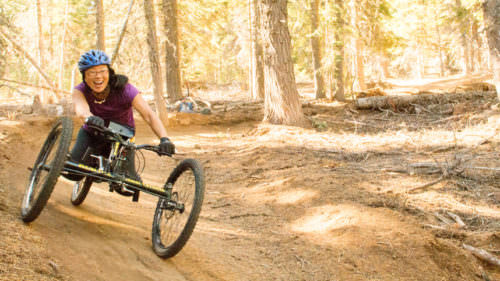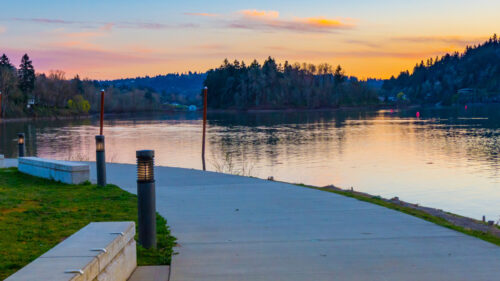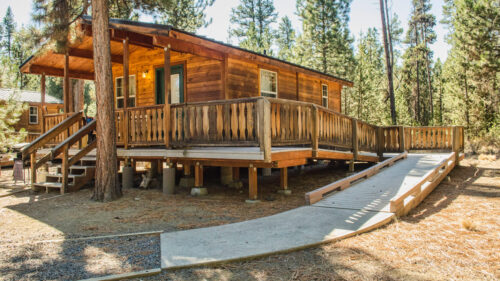Oregon’s outdoors are for everyone. From red-clay hillsides and volcanic spires to verdant valleys and mountain streams, wheelchair-accessible trails take visitors to many of the state’s beautiful sites — and typically feature gentle grades, wide paths and other accessibility-minded features for those in wheelchairs. Here are some of the top wheelchair-accessible trails across Oregon.
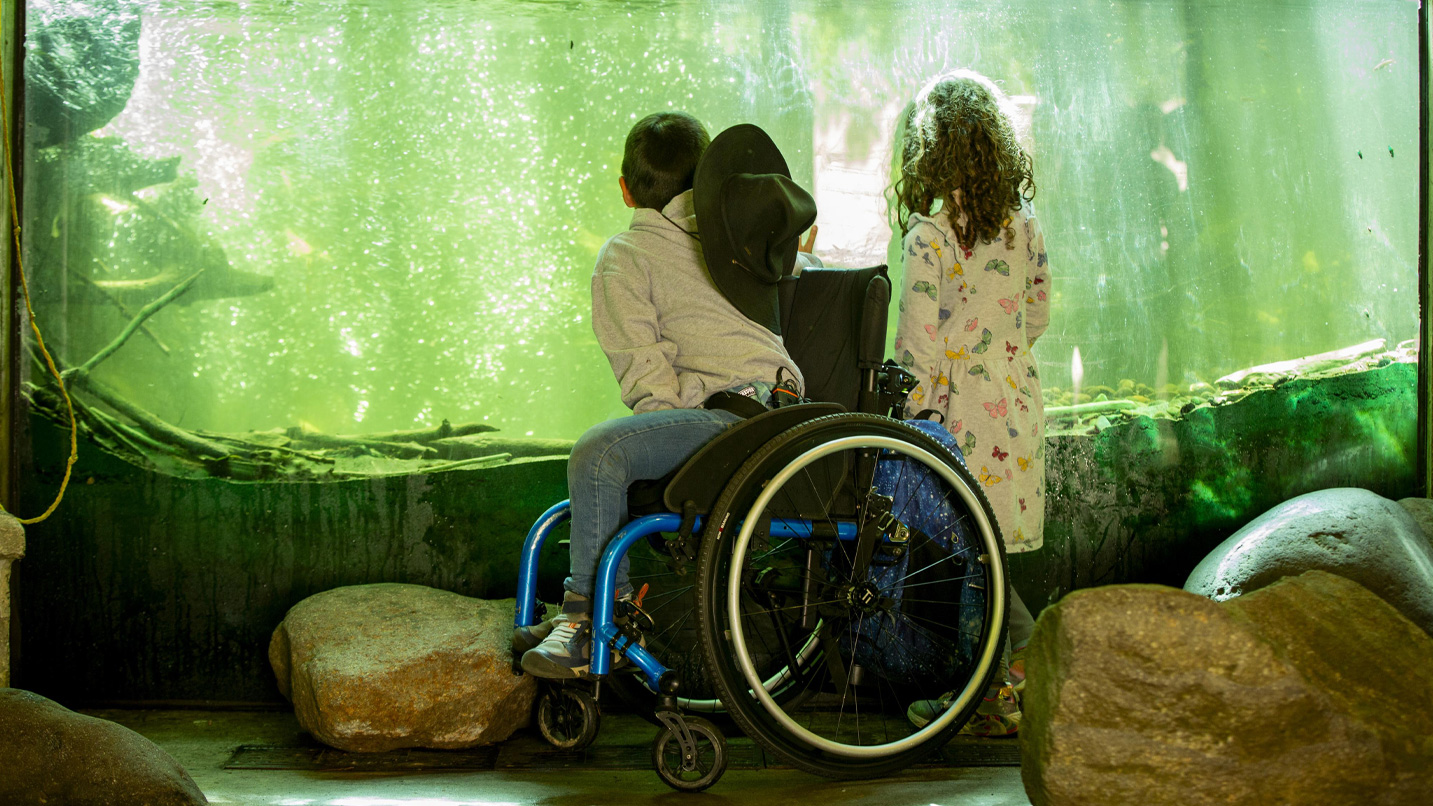
Rural Charm in the Willamette Valley
South of Eugene, the paved, 14-mile Row River Trail traces the path of an old rail line that last ran in 1994. The trail — with a width of 8 to 10 feet and a grade that never exceeds 5% — hugs the banks of Dorena Reservoir, provides views of Willamette Valley farmland and heads along the shore of the Row River.
The wheelchair-accessible Salt Creek Falls Observation Site and Picnic Area affords views of its namesake waterfall, which tumbles nearly 300 feet in the Cascade Range and is the second-tallest single-drop waterfall in Oregon. A short, paved trail heads from the parking lot to a platform whose railings are designed with wheelchair-friendly sightlines. The falls are typically accessible and snow-free between spring and fall — and are roughly 65 miles southeast of Eugene via Highway 58.
Columbia Gorge and Mt. Hood Vistas
In the Columbia River Gorge National Scenic Area, the Historic Columbia River Highway loops through old-growth forests and climbs basalt outcrops for panoramic vistas. Follow the highway to the flat, paved Overlook Trail at Bridal Veil Falls State Scenic Viewpoint — which in spring pairs views of nearby cliffs, soaring Gorge peaks and the Columbia River with colorful wildflower displays. Between April and June, look for the three-petal trillium, purple camas and violet lupine.
Near Mt. Hood, the Wildwood Recreation Site hosts a pair of wheelchair-accessible trails totaling 1.5 miles. The paved Cascade Streamwatch Trail heads to an underwater viewing platform that looks into the Salmon River — where thousands of salmon migrate every fall. If you’re spending the night nearby, the barrier-free Lost Creek Campground hosts wheelchair-accessible campsites, an accessible fishing platform and a flat, 0.3-mile nature trail in the Mt. Hood National Forest.
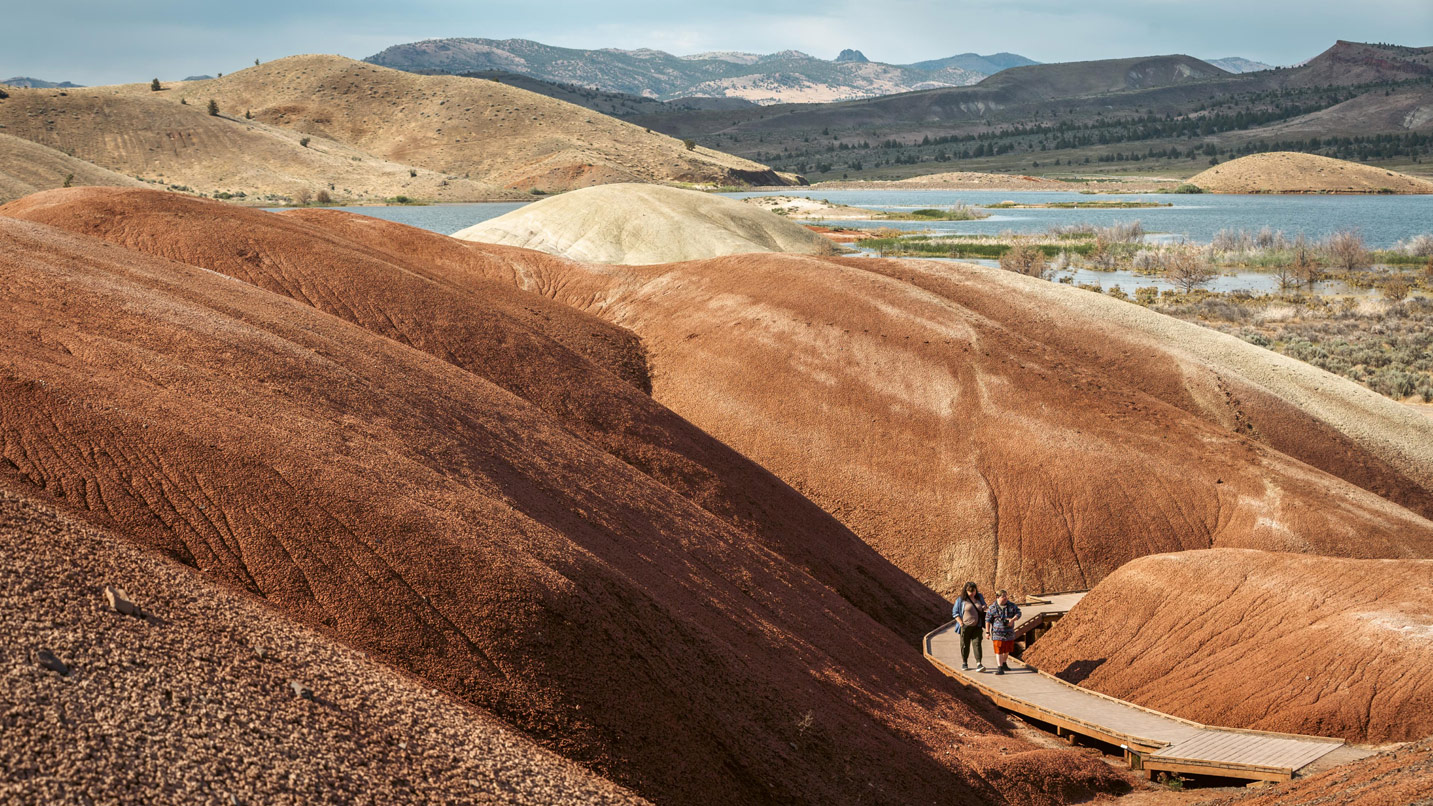
Millions of Years of History in Eastern Oregon
Just outside Baker City, the National Historic Oregon Trail Interpretive Center is home to roughly 2 miles of paved trails — with grades of less than 2% and widths of about 30 inches — with wide-open views of the surrounding Baker Valley. Ask for directions to the paved trail that heads to well-preserved wagon ruts.
For a close-up look at natural history, check out the Painted Cove Trail at the Painted Hills Unit of the John Day Fossil Beds National Monument. The quarter-mile trail follows the base of a hillside of deep red and golden clays — and a portion of the path is on boardwalk to protect the vibrant soils.
Wetlands, Forests and More Around Portland
Near the northern edge of Portland sits the Smith and Bybee Wetlands Natural Area — sandwiched between Smith Lake and the Columbia River. There the wheelchair-accessible Interlakes Trail traverses the urban wetlands while occasionally glimpsing river otters, black-tailed deer, osprey and other species of wildlife.
Closer to downtown, the Overlook Trail at Hoyt Arboretum is a paved, mile-long trail that offers views of nearby peaks and many of the diverse trees that the park is known for.
Roughly 30 miles west of Portland, the Banks-Vernonia State Trail hosts 21 miles of paved, car-free paths — complete with five trailheads for easy access — that follow a repurposed lumber railway line across 13 bridges and through a mix of forests and farmland.
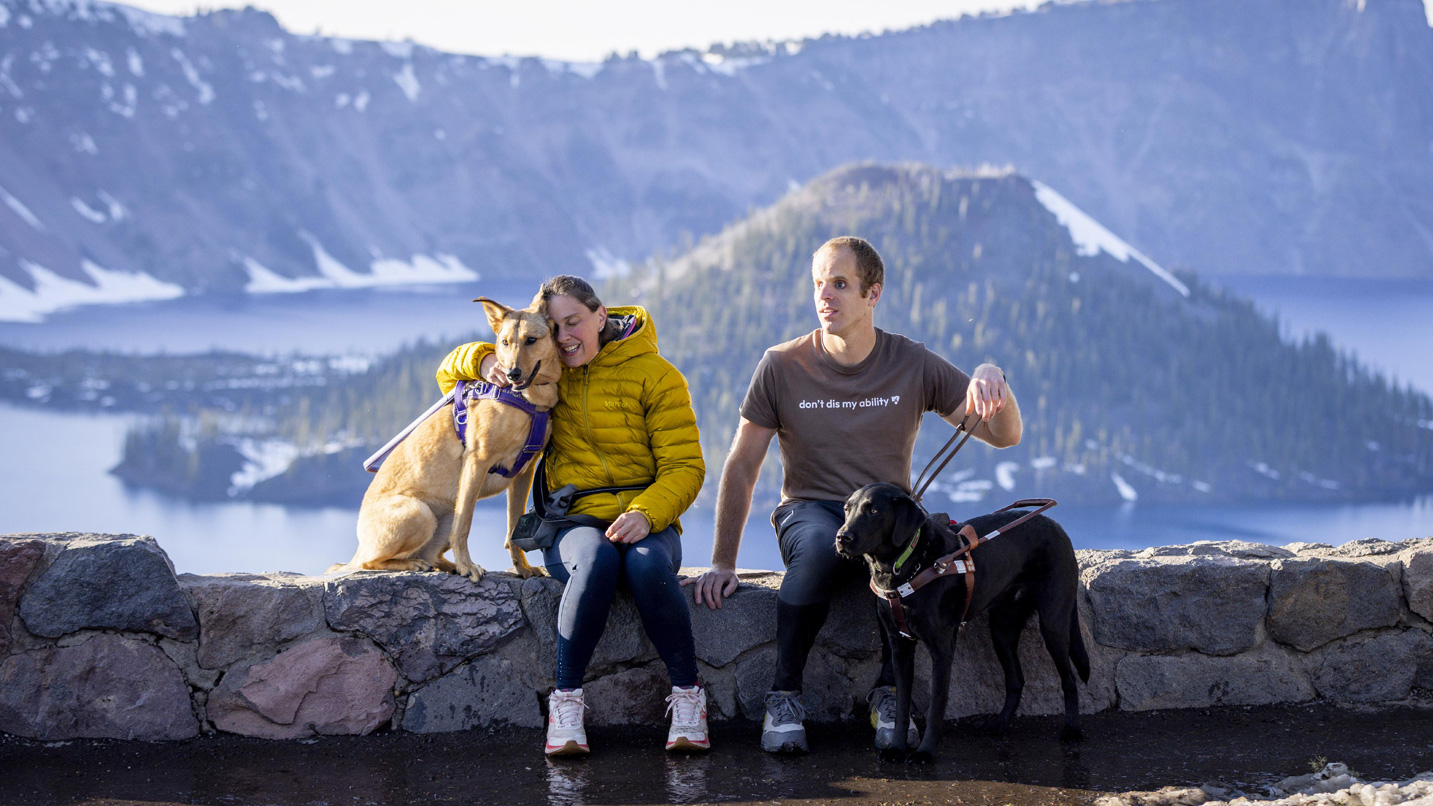
Peaceful Parks and Volcanic Landscapes in Southern Oregon
Much of Ashland’s Lithia Park is accessible by paved paths that head past gardens, ponds, streams and peaceful forestland. Hikers can request an all-terrain track chair from David’s Chair, which makes it easier to navigate the park’s sloped trails and dirt paths. Just north of town, the Bear Creek Greenway is a paved, 20-mile, car-free path that runs between Ashland and Central Point.
Up at Crater Lake National Park, the 0.8-mile Pinnacles Trail is suited to people with all-terrain wheelchairs — though rentals are not available in the park — and showcases volcanic spires that acted as gas vents after the eruption of Mt. Mazama.
Just outside Cave Junction, the Rough and Ready Botanical Wayside hosts a 0.6-mile (round-trip) trail — widened in recent years to accommodate wheelchairs — that heads through colorful wildflower blooms between April and June.
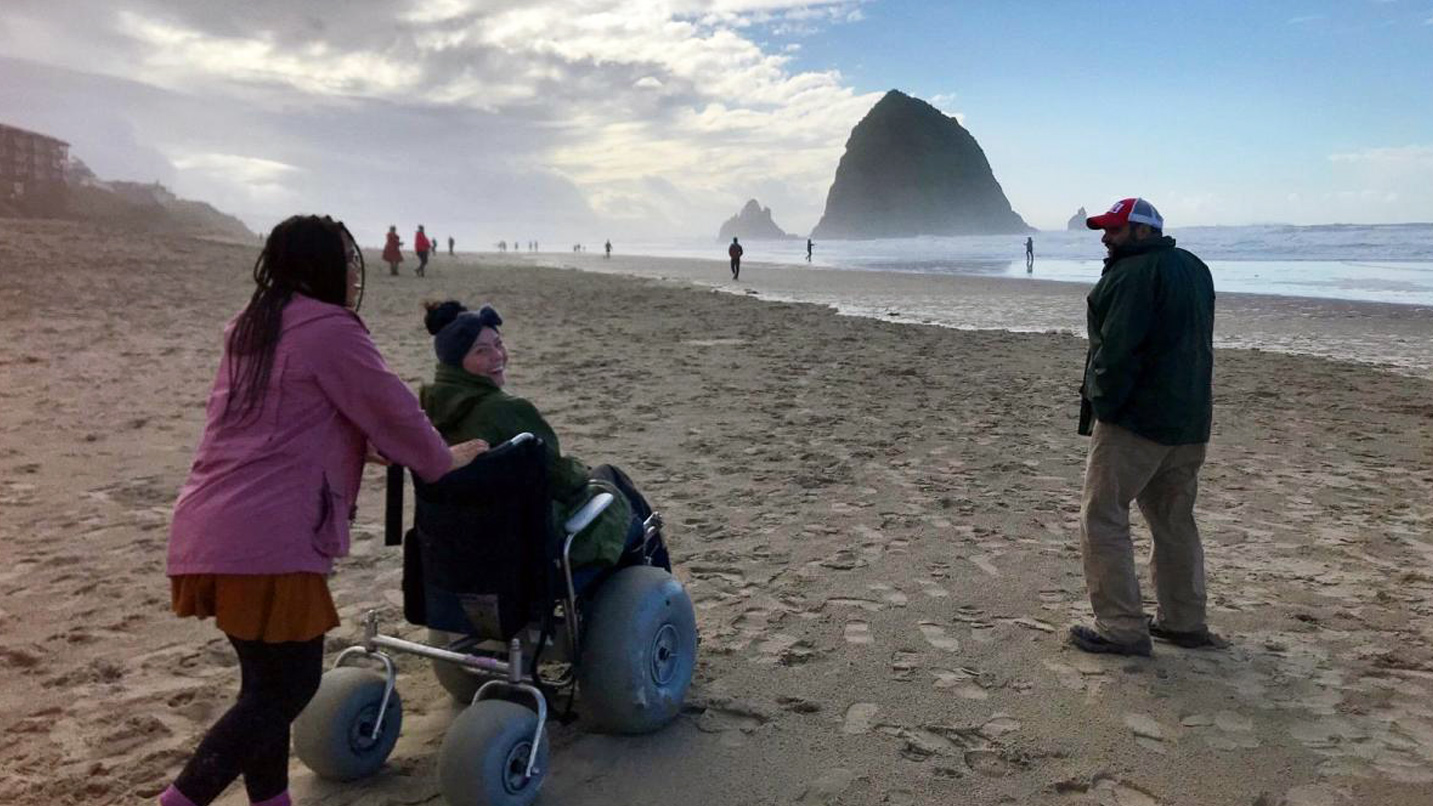
Coastal Forests and Rare Plants Along the Oregon Coast
Accessibility is a point of pride at the 200-acre Kilchis Point Reserve along Tillamook Bay. The reserve, just 5 miles north of Tillamook, offers more than 2 miles of mostly flat, partially paved paths that pass numerous interpretive panels explaining the area’s natural beauty and cultural history.
Farther south, a boardwalk at Darlingtonia State Natural Site allows visitors on wheels to view a grove of rare, carnivorous cobra lilies near Florence.
A few coastal towns have scenic waterfront paths accessible to all, including Astoria’s downtown riverwalk, Seaside’s 1.5-mile paved Promenade and Newport’s historic bayfront. With 850 feet of Mobi-Mats in place, Seaside is also proud to host the longest accessible beach access of its kind on the Oregon Coast. These long mats provide a more stable, even surface for walking or rolling over the sand and are in place seasonally during the warmer months, while conditions allow.
Visitors may rent free adaptive wheelchairs to reach the beach in a number of communities, including Seaside, Cannon Beach and several locations on the Tillamook Coast, including Manzanita, Pacific City and Rockaway Beach.
And in Netarts, Manzanita, Pacific City and Seaside, visitors may request free use of David’s Chair — an “Action Trackchair” (available in adult size and children’s size) that allows people with mobility challenges to access the sandy beach. Outdoorsman David Hatrick came up with the idea to make these chairs publicly available at no cost after being diagnosed with ALS in 2017, passing away 18 months later. Now the nonprofit group run by his friend Steve Furst offers the trackchairs both at designated locations and on a “tow-and-go” basis.
For other ideas and inspiration, check out this guide to wheelchair-accessible destinations and activities on the Oregon Coast.
If You Go:
- Before leaving, check to see if your preferred trailhead requires a pass or permit and, if so, how to purchase one.
- Get updated road conditions, live traffic webcams, construction alerts and other news from the Oregon Department of Transportation’s TripCheck tool.
- Find more trail suggestions and resources by purchasing a copy of The Disabled Hiker’s Guide to Western Washington and Oregon from the nonprofit Disabled Hikers.
- Find more trip-planning inspiration and information on Travel Oregon’s Accessible Travel page.
